Welcome to this edition of our tools for thought series, where we interview founders on a mission to help us think better and work smarter. Lilly Chen is the founder of Brainstory, an AI-powered “think out-loud” app based on the Socratic method of questioning. Brainstory is designed to help people find their moments of brilliance without the slump.
In this interview, we talked about how to use AI for better thinking, how to practice open-mindedness and curious questioning, how to make context sharing efficient, asynchronous, and equal, how to use AI-based open-ended journaling to improve communication and focus, and much more. Enjoy the read!
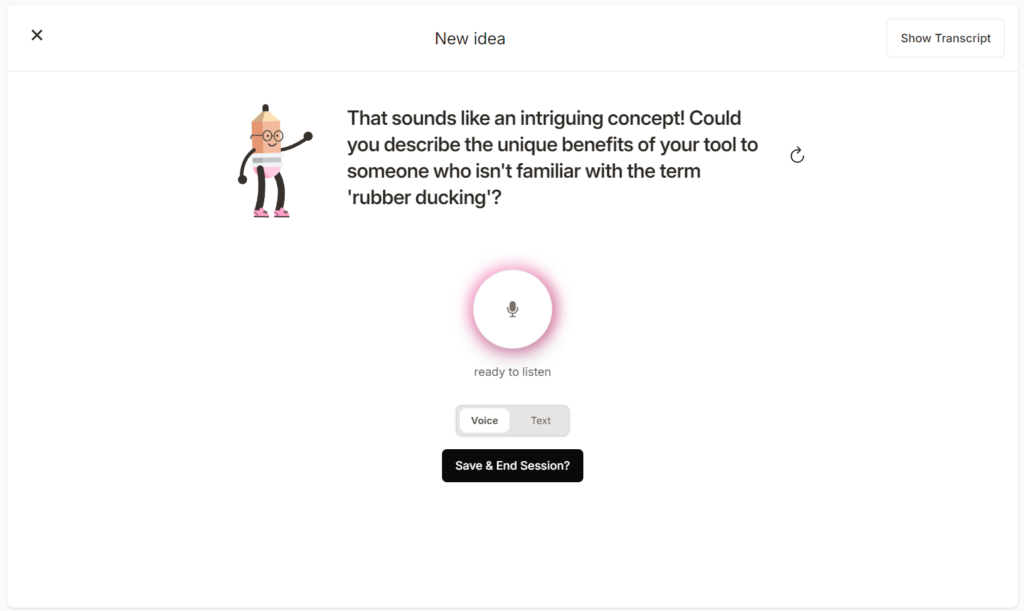
Hi Lilly, thanks for agreeing to this interview! A lot of the conversation around AI tools is centered on generative AI. But you thought of another use case.
I joined the Board of Trustees at Colorado College while I was working as a machine learning engineer. When ChatGPT was released, the vast majority of our students were using it and professors were unsure what to do.
As a technologist, I believe AI is here to stay. As an educator, I believe we have to teach the next generation how to use AI well. I felt like a lot of students were using AI to think for them, but that they still had the “itch” to problem-solve for themselves. So I wanted to create an AI tool that helped people do their best thinking, without thinking for them.
Is that what inspired you to create Brainstory?
The philosophy behind Brainstory was inspired by the head monk at a monastery where I lived as a teenager. Long story short, while I was living at the monastery, the head monk asked me a series of questions about whether I wanted to be there or not. It was the most comforting, reflective experience I’ve ever had.
Through his open-mindedness and curious questioning, I realized that I wanted to attend college. People (and various AI tools) are so prone to giving advice instead of listening. There’s a lot of cheesy sayings about the answer being within us all along, but it’s totally true.
So, how does it work?
You can think of Brainstory like the monk. A non-judgmental, curious listener. You have to speak out loud because it helps you organize and clarify your thoughts. Brainstory will listen and ask follow-up questions. Through this process, you’ll discover answers you didn’t know you had.
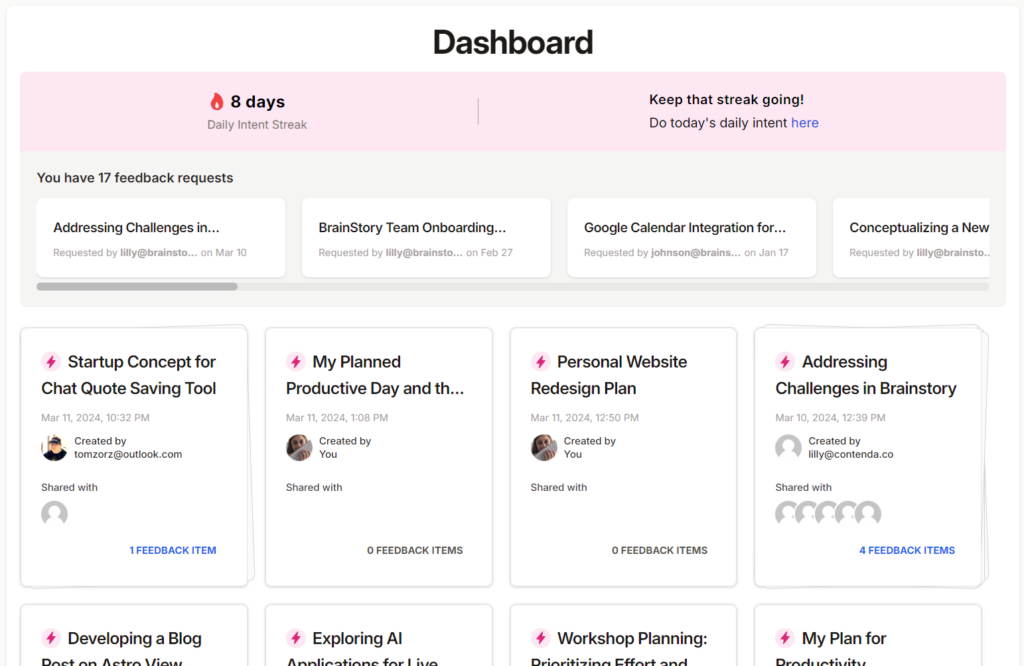
How can people use Brainstory to improve their productivity?
People can do their goal-setting, project planning, and improving their overall productivity with Brainstory. Here’s an example: say that you have a pitch for what you want to write about. You can talk it out with Brainstory and use it to clarify details and topics you want to address.
Your colleagues can then take your Brainstory and give feedback on your idea in the app, and you can get an overall view of everyone’s thoughts, and have more clarity both on what you want to write, and what you should change, faster than ever. This workflow can work for classrooms, for groups of friends, or even just for yourself.
I imagine this would be great for journaling as well.
One feature of Brainstory is called “Daily Intent”. Once a day, you can complete a Brainstory focused on your day, whether it’s reflective or planning. You’ll have the option to complete a log of behaviors as well. It’s a mix of open-ended journaling with tracking for people who want to see how Brainstory can fundamentally improve their communication and focus.
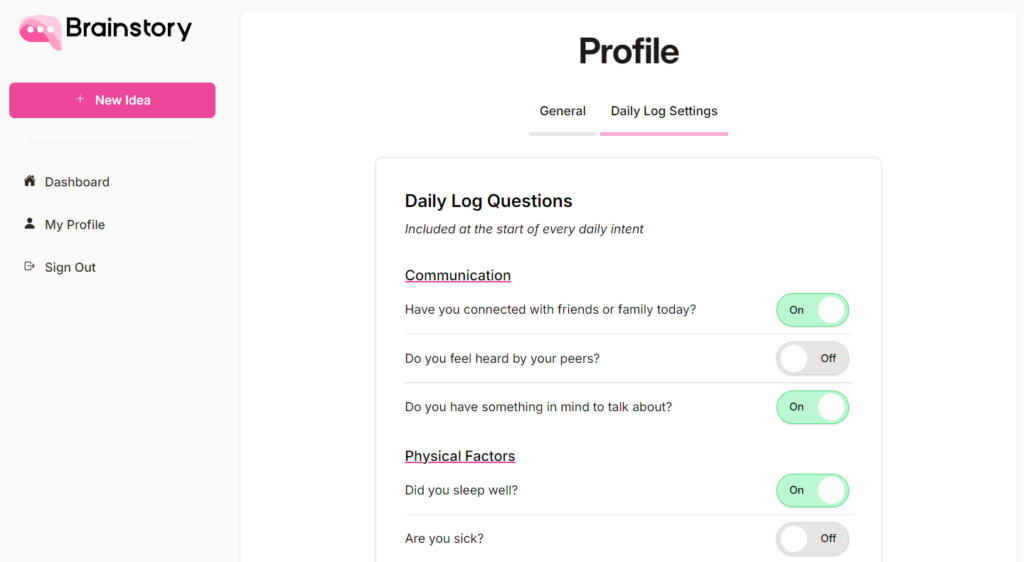
Sometimes it’s better to think together. What about bringing others on board to brainstorm together?
One of my favorite ways to use Brainstory is for decision-making meetings. When a decision needs to be made, the primary reason you call a meeting is so that all the relevant people can share their context, and open-ended discussion can bring out new ideas. Brainstory makes context sharing efficient, asynchronous, and above all, equal. Everyone can talk and be heard. The resulting group Brainstory serves as a source of truth for a decision to be made.
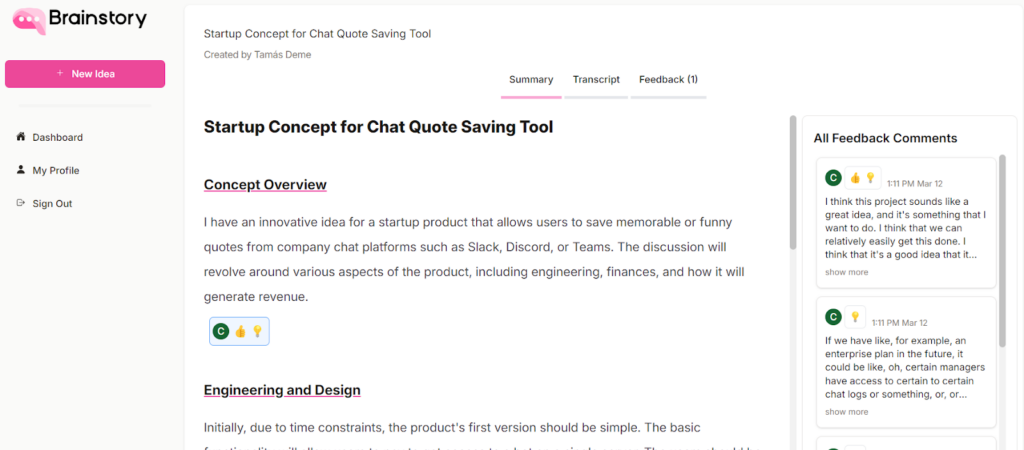
A big concern with such AI-powered thinking tools is privacy and how our information can be used for training models. How does Brainstory address this concern?
We don’t use any of our customer’s sessions for training data. We understand that a lot of people are using it for very personal purposes or for work. Even internally, we cannot read the logs of your conversations. So you don’t have to worry about an AI or a human knowing what you talked about. We have a Privacy Policy as well that goes into more detail.
What kind of people use Brainstory?
People who feel like their best ideas are always on the tip of their tongue. That can be students who know what they want to write, but not how to start. This could be the developer who can feel the solution to their bug being just moments away. Teams who feel like their creativity can shine with just one more meeting– all of these people are people who use Brainstory to have their best thoughts.
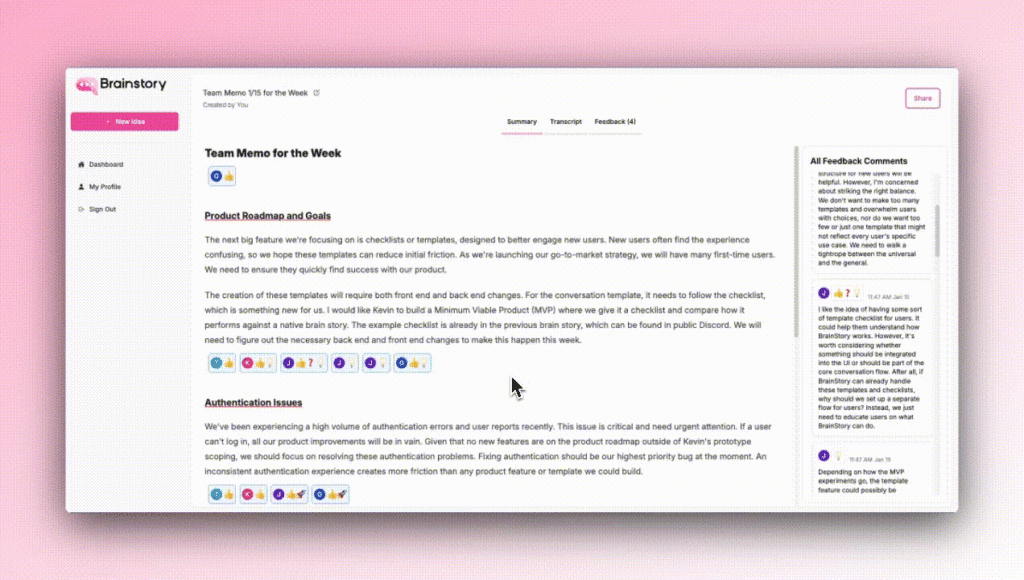
What about you, how do you use Brainstory?
Personally, I use Brainstory to make progress on my goals, like health and tennis. Long story short, I had a life altering concussion about a year ago and my overall health fell off the wayside. I needed to change my diet, ideally lose a lot of weight, and find physical activity that worked for my lifestyle. Using Brainstory, I’m able to troubleshoot my struggles, essentially acting as my own personal trainer, coach, nutritionist, and therapist.
Professionally, I use Brainstory to pitch product features, plan team meetings, to send out company memos, and to get feedback from investors.
And finally… What’s next for Brainstory?
We’re looking to make the Brainstory experience even more magical by enabling context sharing. This means that Brainstory will be able to reference all of your past conversations to better help you pattern match and compare your progression over time. Our mission is to help people think smarter, not offload their thinking onto AI. If you have a magic idea for us, please share it in our community Discord.
Thank you so much for your time, Lilly! Where can people learn more about Brainstory?
You can sign up at brainstory.ai and where we also have a glossary of terms we discussed in this interview. You can also follow us on LinkedIn and TikTok.
